Montesilvano: the beach
Beats me why anyone would want a warm sticky doughnut when temperatures are nudging 40° but it seems that people do. Why else would a jaunty cart featuring a doughnut-munching Homer Simpson appear on the beach at around 10 every morning in summer? Why else would the peace be shattered by the cry of CiaaAAMMBELLE if not to alert the sunbathing public that their favourite seaside snack was on its way?
It pays to get to the beach well before Ciambelle Man. 7.30am is good. At that time beach noises are as they should be and the sea is often glorious – limpid round the edges, sun-spangled in the middle.
Don’t think for a moment, though, that you will be alone. Among those ‘of a certain age’ settled comfortably on the deckchairs and sunbeds of the lidos, soaking up the early, gentle sunlight, will be women who have been up since 5am washing and chopping vegetables and for whom a trip to the beach is a well-earned interlude between preparing lunch and actually eating it. A few women (and these will be among the very few signore you will ever see actually in the water around these parts) will be wading knee-deep in the shallows in pursuit of better circulation and a farewell to cellulite. In the ‘free’ areas beyond the lidos, doughty day-trippers will already be planting their umbrellas, staking claim to the premium spots near the water’s edge.

From a deserted stretch of sand where a couple of elderly men, looking outrageously fit, are playing at racchettone comes the soothing, rhythmic thud of a tennis ball against wood.
But the only real industry will be around the recently docked fishing boats where, under the beady eyes of wheeling gulls, the crews are unloading the night’s catch and hammering out snags in their nets.
Rarely has life seemed so wholesome and uncomplicated. Until…
I have nothing against doughnuts, but the arrival of the Ciambelle Man at Montesilvano Beach marks a certain transition. His cry is the signal for the real business of the day to begin. The lidos fill up fast. Adults collapse onto sunbeds and children hurl themselves at the sea, which is soon abob with enormous blow-up flamingos and desert islands with palm trees and incongruous zebras or whatever floatable plastic plaything is fashionable this year, all destined to end up, we fear, in the Great Floating Garbage Patch in the middle of the ocean.
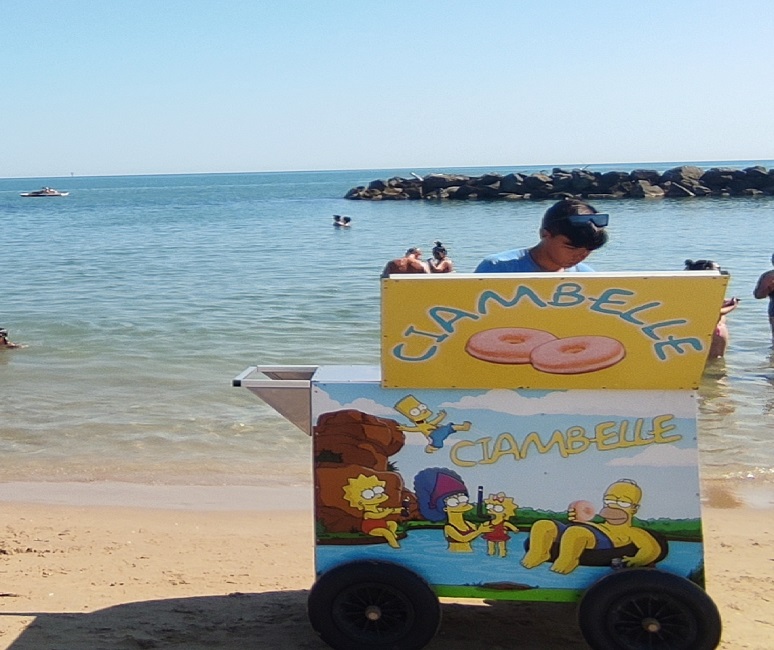
Doughnut Man is the first in a succession of sellers plying their trade up and down the beach – Albanians and Bangladeshi, Senegalese and Moroccans – peddling jewellery and sunglasses and tablecloths and beach towels, some dragging wagons decked out like mini department stores. The prize for the most picturesque goes to the one holding the strings of a dozen soaring, bobbing kites.
And all day long, from breakfast to cocktail hour, the pedestrian traffic between the umbrellas and the lido remains constant.
Along at the hotel end of the beach, water aerobics is soon in full swing. The music is loud enough to reach potential participants across the sea in Croatia, and coaches yell into mics at a half dozen hotel guests determined to get their money’s worth. They have, after all, paid for full board and that includes entertainment even if the entertainment turns out to be them. And then, just when you think that the cacophony couldn’t get any more cacophonic, blasting from the loudspeakers along the prom comes Radio Mare, a twice-a-day, two-hour invasion of commercials, recipes, insipid music and banal blether.
If you came to the beach with the intention of being lulled by the music of the waves, now is the time to beat it.
A drone’s view would reveal a bay of about 8km stretching from the River Saline in Montesilvano to the port of Pescara. Like most beaches on the Adriatic coast, the bay is sectioned off into lidos, each striped with rows of colourful umbrellas. There are a few free beaches, though some are just narrow strips of sand between one lido and another.
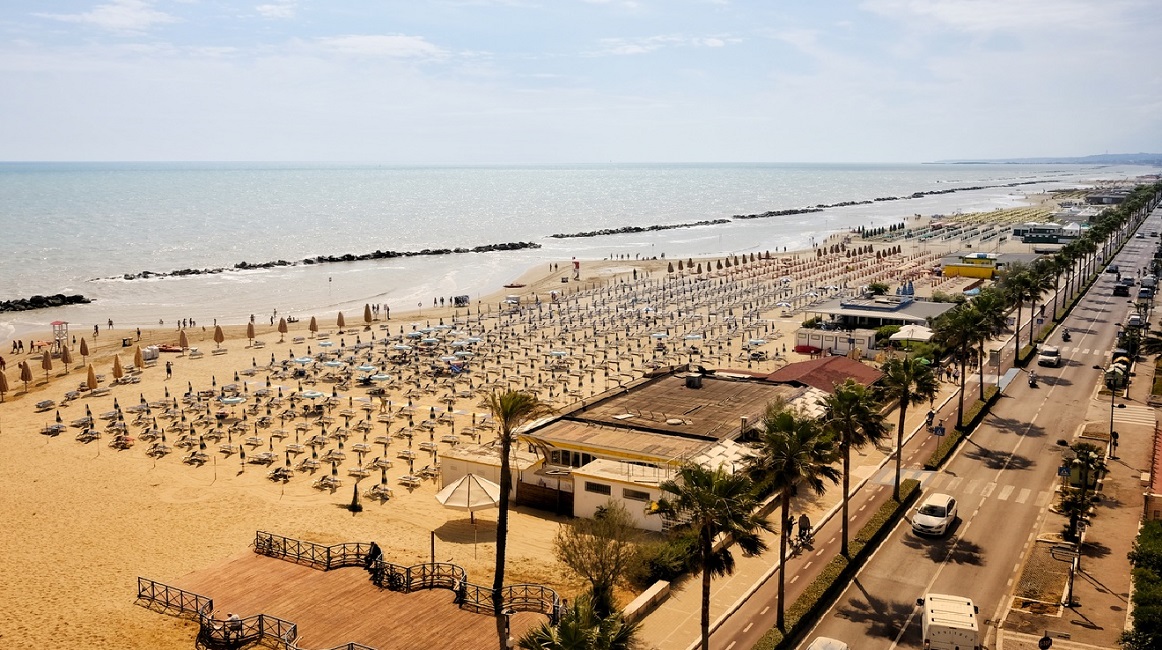
At the Saline end of the bay are the Grandi Alberghi, a tight cluster of high-rise hotels accommodating around 3000 guests. When they were built in the early 1960s the architects evidently failed to take into account the trajectory of the setting sun, and the result is that the hotels’ private beaches are in shadow for most of the afternoon. But that is not the only architectural calamity in Montesilvano. More on that elsewhere.
There are many cool things about Montesilvano beach. One is that swimming is safe. After many years of swimming in Australian waters, with eyes peeled constantly for danger – if a shark doesn’t get you then a truant surfboard or freak wave surely will – I find it comforting to know that here very little can happen to me. This is partly due to the row of huge rocks forming a breakwater about 50 metres out to sea. Testifying to a decades-long battle against the encroaching waves, the rocks form safe pools close to shore, a godsend to anxious parents, grandparents and unconfident swimmers.
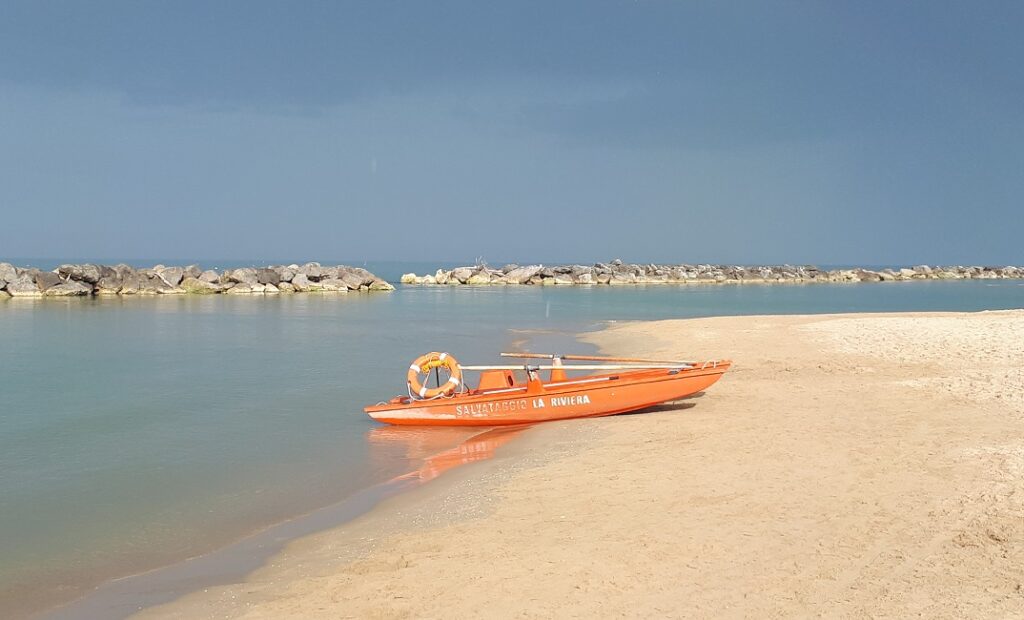
And then, the beach in its quieter moments is beautiful. If you fled when it all got too much, you might want to come back around 7 in the evening. The sun will have lost its bite and those who have bravely endured the day are staggering wearily homeward. Seagulls swoop and claim back their places along the rocks. Everything is turned to gold by the sinking sun and the air is warm and velvety. From a distance the sea is dark and glossy as shot silk. The sky turns peachy. A few remaining beach-lovers gaze out to sea and murmur in agreement: this is the very best time.


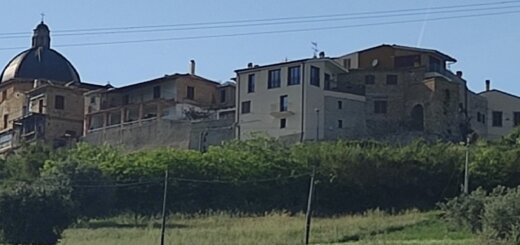
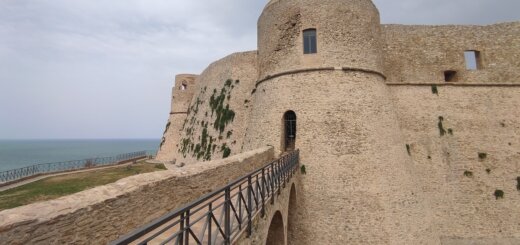
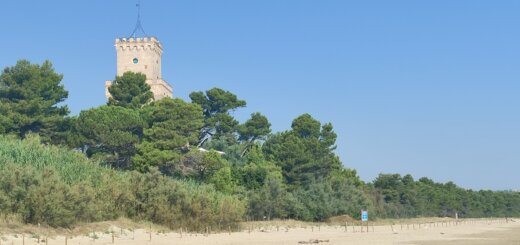

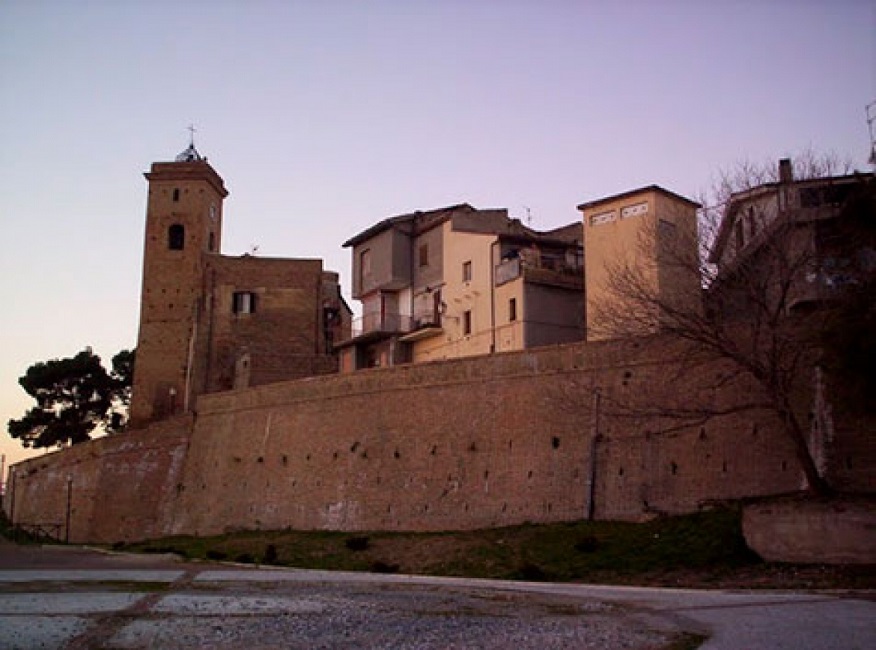
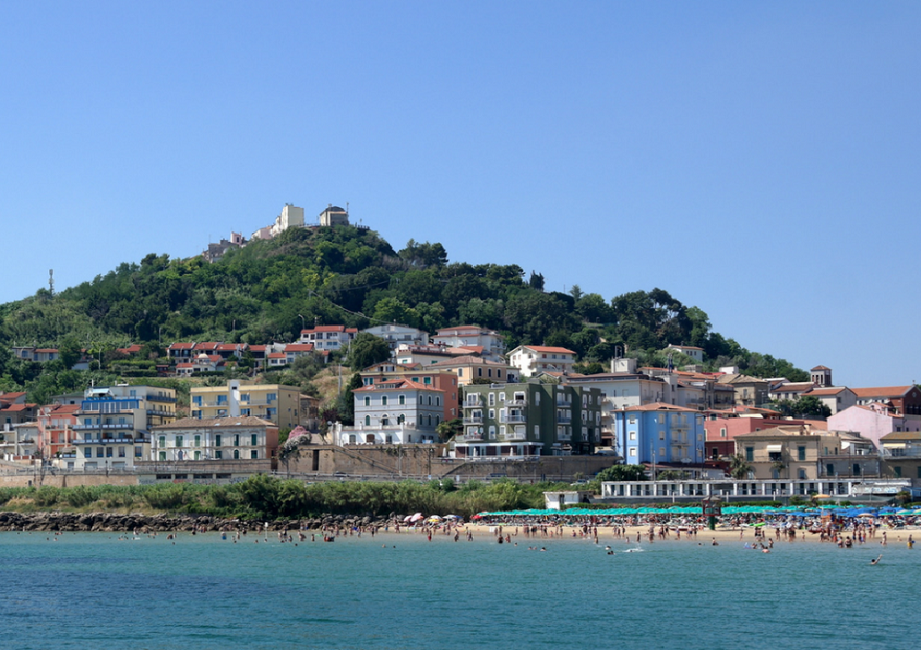
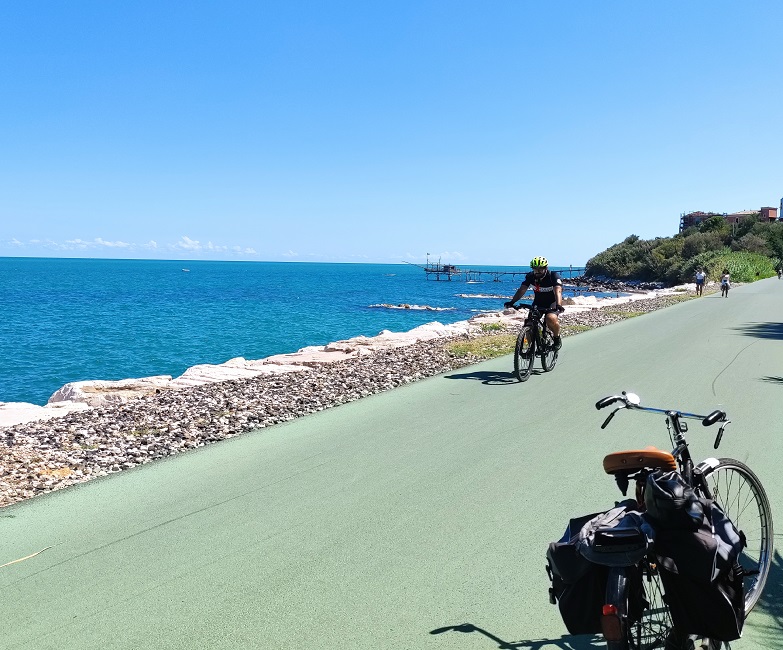
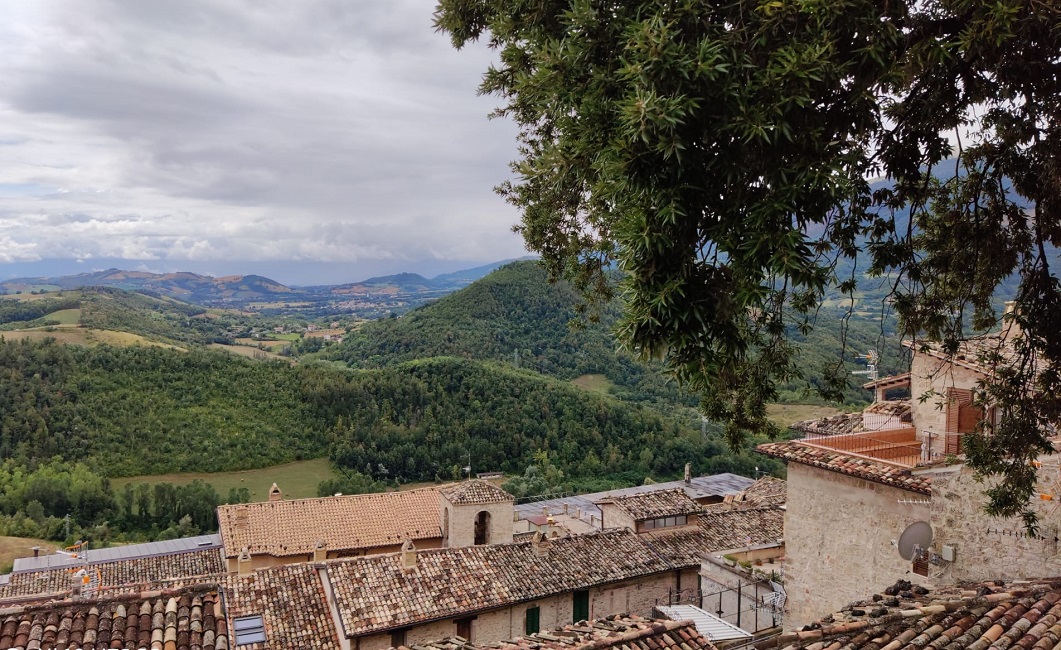
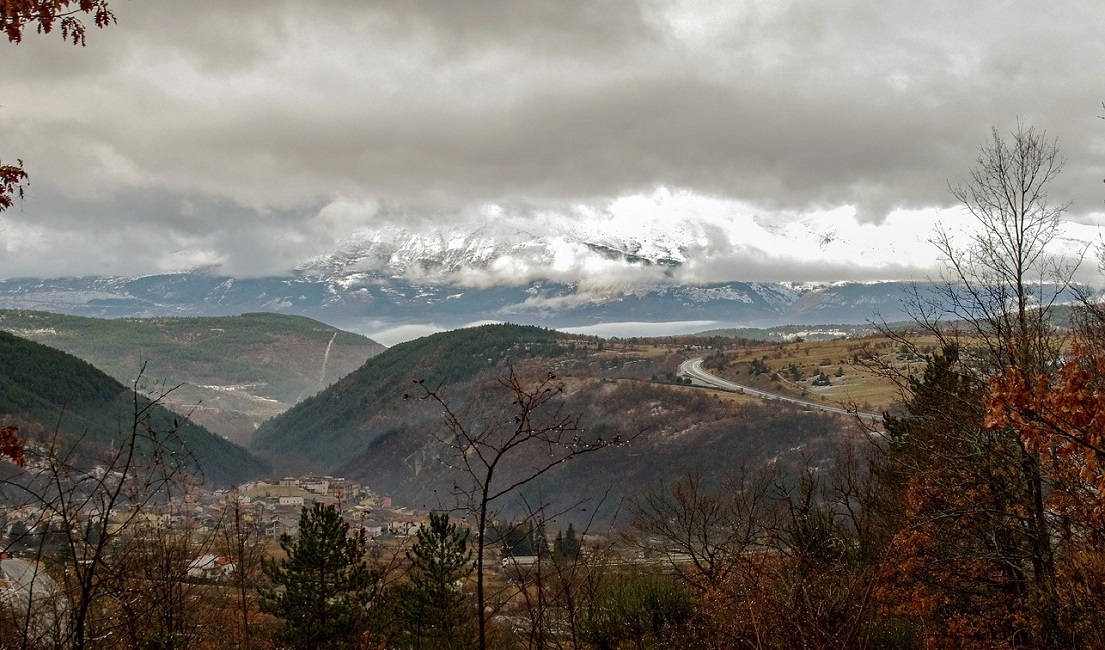

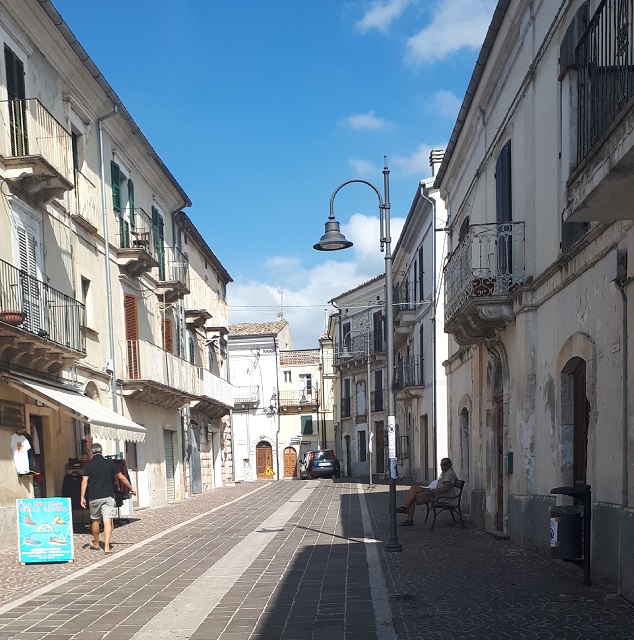
3 Responses
[…] Montesilvano: the beach […]
[…] Montesilvano: the beach […]
[…] Montesilvano: the beach […]